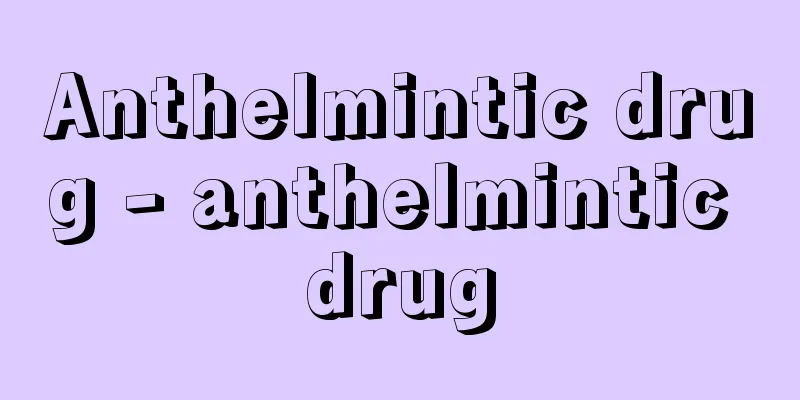Malignant lymphoma

|
What kind of disease is it? ●Main symptoms and course Malignant lymphoma is a disease in which lymphocytes grow abnormally, threatening the normal function of tissues. Half of all cases are nodal lymphomas, which cause lymph nodes to enlarge in the neck, armpits, groin, etc., while the other half are caused by abnormal proliferation of lymphocytes in organs of the body. Since lymphocytes are found in any part of the body, this disease can develop in any organ. Therefore, if classified in detail, there are as many as 70 types, and treatment methods and prognosis vary depending on the characteristics of the cells and the organ in which the disease develops. ● Causes of the disease and how symptoms develop It has been revealed that some malignant lymphomas are caused by genetic abnormalities such as the BCL2 gene abnormality, which is related to cell apoptosis (scheduled cell death). There are also malignant lymphomas involving gastric MALT lymphoma caused by Helicobacter pylori infection, human T-cell leukemia type I, AIDS virus, EB virus, etc. However, the causes of many malignant lymphomas remain unknown. Characteristics of the disease: The number of patients newly diagnosed with malignant lymphoma in 2010 is estimated to be 23,919. In 2013, the number of deaths from malignant lymphoma was 11,340. It is a malignant disease that is most common in men and women in their 70s. (1) The introduction of the molecular targeted drug rituximab has improved prognosis. In addition, the effectiveness of immunotherapy has been confirmed for recurrent cases of Hodgkin's disease, a type of malignant lymphoma. (2) This is an area where new drugs are expected to continue to be developed in the future. EBM checks on common treatments and care [Treatment and care] Biopsy lymph nodes etc. and make a diagnosis [Evaluation] ☆☆☆ [Key points for evaluation] A biopsy is performed in which the entire lymph node is removed without breaking the outer membrane, and the type of malignant lymphocyte is determined based on the morphology of the malignant cells, chromosomal and genetic abnormalities, and proteins present on the cell surface. The prognosis is predicted and a treatment method is selected based on these characteristics of malignant lymphoma, as well as the patient's age and general condition, and the spread of malignant cells evaluated through diagnostic imaging. For some slow-growing malignant lymphomas, the prognosis remains unchanged whether or not chemotherapy is administered, and in some cases the patient's progress is monitored. For fast-growing malignant lymphomas, treatment is a combination of chemotherapy and radiation therapy. (3) ■Treatment for diffuse large cell non-Hodgkin's lymphoma [Treatment and care] Chemotherapy [Evaluation] ☆☆☆☆☆ [Evaluation points] Treatment outcomes are reported for each type of malignant lymphoma and each patient's condition. For example, in the case of diffuse large cell non-Hodgkin's lymphoma, the most common type of malignant lymphoma, anticancer drug therapy (including corticosteroids) plus molecular targeted therapy is generally performed. This is a method of attacking malignant cells by periodically administering cytotoxic drugs into the body via infusion or oral medication. Anticancer drugs damage not only malignant cells, but also normal cells. Therefore, by using the drugs at intervals of three weeks or so, malignant cells are reduced from the body while normal cells are restored. In addition, because this treatment significantly reduces white blood cells, which are cells that fight infection, it is necessary to carry out treatment under strict systemic management, including the control of infections, such as the use of drugs (G-CSF) that increase white blood cells. (4) [Treatment and care] Autologous peripheral blood stem cell transplantation [Evaluation] ☆☆☆ [Evaluation points] If recurrence occurs after the above chemotherapy, autologous peripheral blood stem cell transplantation therapy may be performed. Autologous peripheral blood stem cell transplantation therapy is currently performed at the time of recurrence, taking into account side effects, since there is generally no difference in prognosis whether it is performed after recurrence or for the first time. (5)-(8) [Treatment and care] Radiation therapy [Rating] ☆☆☆☆ [Evaluation points] In most cases, chemotherapy is the main treatment, but radiation therapy may be used if the malignant lymphoma cells have become large masses. For example, in the case of localized Hodgkin's lymphoma, regional radiation therapy is used to irradiate the lymphoma area with radiation after chemotherapy. (9)(10) Checking commonly used drugs with EBM Example of treatment for diffuse large cell non-Hodgkin's lymphoma [Drug use] R-CHOP therapy [Drug name] Anticancer drug: Endoxan (cyclophosphamide hydrate) + Adriamycin (doxorubicin hydrochloride) + Oncovin (vincristine sulfate) + Prednisone (prednisolone) + Molecular targeted drug: Rituxan (rituximab) (11)-(13) [Rating] ☆☆☆☆☆ [Evaluation Points] It has been reported that adding the molecular targeted drug rituximab to the previously used CHOP therapy increases the rate of disease suppression and improves prognosis. Rituximab is effective when malignant lymphoma cells contain a protein called CD20. These drugs are administered 6 to 8 times every 21 days. About 2 months after the end of treatment, PET/CT scans and other images are used to check whether the treatment has been effective. If malignant cells are suppressed (complete remission) and the prognosis is expected to be good based on the characteristics of the malignant cells and the patient's condition, follow-up will be routinely performed. In cases where the initial treatment does not respond well or where the disease relapses, the effectiveness of autologous peripheral blood stem cell transplantation has been shown, and this treatment is recommended. However, if autologous peripheral blood stem cell transplantation cannot be performed due to the patient's condition, chemotherapy using multiple anticancer drugs in combination is performed. However, at this stage, no conclusion has been reached as to which combination is best. Examples of Hodgkin's lymphoma treatment [Drug use] ABVD therapy, etc. [Drug name] Adriamycin (doxorubicin hydrochloride) + Bleo (bleomycin hydrochloride) + Exar (vinblastine sulfate) + Dacarbazine (dacarbazine) (14) (15) [Rating] ☆☆☆☆☆ [Evaluation points] The above medications are administered intravenously on the 1st and 15th days, and are generally administered four times at 28-day intervals. After treatment, the effects of the treatment are observed with images, etc., two weeks after treatment, or one month after treatment if radiation therapy is combined. Overall, it is currently the most reliable treatment method. <br /> Life prognosis has improved with the introduction of molecular targeted drugs. Malignant lymphoma is a disease whose life prognosis has improved significantly since the molecular targeted drug Rituxan (rituximab) came to be used in treatment. Furthermore, there have been reports that immunotherapy has been effective in treating recurrent cases of Hodgkin's disease, and it is one of the diseases in which hopes are high for the development of new drugs in the future. Treatment plans are determined based on the type of malignant lymphoma, its spread, and the patient's overall condition. A biopsy is performed to remove the entire lymph node without breaking the outer membrane, allowing for an accurate diagnosis of the morphology of the malignant cells, chromosomal and genetic abnormalities, and proteins present on the cell surface. These conditions are used to determine the type of malignant lymphocytes, and the effectiveness of treatment can be predicted for each type. The most appropriate treatment method is selected after taking into consideration the patient's age, overall condition, and spread of malignant cells evaluated by diagnostic imaging, etc. For slow-growing malignant lymphomas, the progress is observed, while for fast-growing malignant lymphomas, chemotherapy and radiation therapy are combined. In the treatment of diffuse large cell type non-Hodgkin's lymphoma, which is the most frequent type of malignant lymphoma, the R-CHOP therapy, which uses anticancer drugs: Endoxan (cyclophosphamide hydrate) + Adriamycin (doxorubicin hydrochloride) + Oncovin (vincristine sulfate) + Prednisolone + molecular targeted drug: Rituxan (rituximab), has been shown to be effective. During chemotherapy, the risk of infection increases significantly due to a significant decrease in white blood cells, so treatment is carried out under strict systemic management. If the disease recurs, consider autologous peripheral blood stem cell transplantation.It has been reported that there is no difference in prognosis whether autologous peripheral blood stem cell transplantation is performed initially or after recurrence, and it is currently only considered at the time of recurrence, taking into account side effects. (1) National Cancer Center, Cancer Control and Information Center. Incidence data (national estimates). http://ganjoho.jp/professional/statistics/statistics.html#05. Accessed January 19, 2015. Source: "EBM: A book that explains correct treatment" Information about the book "EBM: A book that explains correct treatment" |
|
どんな病気でしょうか? ●おもな症状と経過 悪性リンパ腫(しゅ)は、リンパ球が異常に増殖し、組織の正常の機能を脅かす病気です。頸部(けいぶ)、わきの下、足の付け根等のリンパ節が大きくなる節性(せつせい)リンパ腫が全体の半分、残りの半分は体の臓器のなかにあるリンパ球の異常な増殖で発症します。リンパ球は体のどの部分にもあるため、どの臓器からも発症し得る病気です。そのため、細かく分類すると70種類におよび、細胞の特性や発症した臓器によって治療方法も予後も異なります。 ●病気の原因や症状がおこってくるしくみ 一部の悪性リンパ腫は、細胞のアポトーシス(予定された細胞死)に関連するBCL2遺伝子異常等の遺伝子異常が明らかになっています。また、ピロリ菌感染による胃MALTリンパ腫や、ヒトT細胞白血病Ⅰ型、エイズウイルス、EBウイルス等の感染が関与している悪性リンパ腫もあります。しかし、多くの悪性リンパ腫の原因はわかっていません。 ●病気の特徴 2010年に新たに悪性リンパ腫と診断された患者数は、23,919人と推測されています。2013年、悪性リンパ腫による死亡者数は11,340人でした。男女ともに70歳代に多い悪性疾患です。(1) 分子標的薬であるリツキシマブの導入で、生命予後が改善しました。また、悪性リンパ腫の一つであるホジキン病の再発例に対し、免疫療法の効果が確認されています。(2) 今後も新薬が期待されている領域です。 よく行われている治療とケアをEBMでチェック [治療とケア]リンパ節などを生検(せいけん)し、診断を行う [評価]☆☆☆ [評価のポイント] リンパ節を外側の膜を破らないようにまるごと摘出(てきしゅつ)する形式の生検を行い、悪性細胞の形態、染色体や遺伝子の異常、細胞表面にでているたんぱく質によって、悪性化したリンパ球の種類を判定します。これらの悪性リンパ腫の特性に、患者さんの年齢や全身状態、画像診断等で評価した悪性細胞の広がりを考慮して予後を予測し、治療方法を選択します。増殖のゆっくりした悪性リンパ腫は、化学療法などの治療を行っても、行わなくても予後が変わらないものがあり、経過を観察する場合もあります。増殖速度の速い悪性リンパ腫では、化学療法や放射線療法を合わせた治療を行います。(3) ■非ホジキンリンパ腫びまん性大細胞型の治療 [治療とケア]化学療法を行う [評価]☆☆☆☆☆ [評価のポイント] 治療方法は、悪性リンパ腫の種類や患者さんの状況ごとに、治療成績が報告されています。たとえば、悪性リンパ腫のなかでもっとも多い、非ホジキンリンパ腫びまん性大細胞型では、抗がん薬療法(副腎皮質(ふくじんひしつ)ステロイド薬を含む)+分子標的療法を行うことが一般的です。これは、点滴や飲み薬で細胞毒性のある薬を定期的に体のなかに入れて、悪性細胞を攻撃する方法です。抗がん薬は、悪性細胞だけでなく、正常の細胞も障害します。そのため3週間といった間隔をあけて薬を使うことで、正常の細胞を回復させつつ、悪性細胞を体のなかから減らしていきます。また、感染と戦う細胞である白血球はこの治療により著しく減少するため、白血球を増加させる薬(G-CSF)の使用など、感染症のコントロールをはじめとする厳重な全身管理のもとで治療を行う必要があります。(4) [治療とケア]自家末梢血幹細胞移植療法を行う [評価]☆☆☆ [評価のポイント] 上記の化学療法を行った後に再発した場合には、自家末梢血幹細胞移植療法を行うことがあります。自家末梢血幹細胞移植療法は、一般的には再発してから行っても、初回に行っても予後に差がないことから、副作用を考慮し、現在は再発時に行われます。(5)~(8) [治療とケア]放射線療法 [評価]☆☆☆☆ [評価のポイント] 多くの場合、化学療法が中心となりますが、悪性リンパ腫の細胞が大きなかたまりになっている場合などは放射線療法が行われることがあります。たとえば、限局したホジキンリンパ腫では、化学療法の後にリンパ腫の部位に集中的に放射線を照射する領域放射線療法を行います。(9)(10) よく使われている薬をEBMでチェック 非ホジキンリンパ腫びまん性大細胞型の治療の例 [薬用途]R-CHOP療法 [薬名]抗がん薬:エンドキサン(シクロホスファミド水和物)+アドリアシン(ドキソルビシン塩酸塩)+オンコビン(ビンクリスチン硫酸塩)+プレドニン(プレドニゾロン)+分子標的薬:リツキサン(リツキシマブ)(11)~(13) [評価]☆☆☆☆☆ [評価のポイント] 以前行われていたCHOP療法に、分子標的薬のリツキシマブを加えると、病状をおさえ込む率や予後の改善が高まると報告されています。リツキシマブは、悪性リンパ腫細胞に、CD20と呼ばれるたんぱくがあるときに有効です。これらの薬を21日ごと、6~8回、投与することをくり返します。治療終了から2カ月程度後にPET/CT等の画像で効き目があったかどうか、確認します。悪性細胞がおさえ込まれており(完全寛解)、悪性細胞の特性や患者さんの状態等から予後が良好と推測される場合は定型的に経過観察を行うことになります。 最初の治療で反応がよくなかった場合や再燃時は、自家末梢血幹細胞移植療法の有効性が示されており、この治療を行うことが勧められます。ただし、患者さんの状況により、自家末梢血幹細胞移植が施行できない場合は、複数の抗がん薬を併用する化学療法が行われます。しかし、現段階でどの組み合わせがもっともすぐれているのかは結論がでていません。 ホジキンリンパ腫の治療の例 [薬用途]ABVD療法ほか [薬名]アドリアシン(ドキソルビシン塩酸塩)+ブレオ(ブレオマイシン塩酸塩)+エクザール(ビンブラスチン硫酸塩)+ダカルバジン(ダカルバジン)(14)(15) [評価]☆☆☆☆☆ [評価のポイント] 1日目と15日目に点滴で上記の薬を投与し、28日間隔で4回行うのが一般的です。治療後、2週間以降、放射線療法を組み合わせたときは1カ月以降、画像などで治療の効果をみます。 総合的に見て現在もっとも確かな治療法 分子標的薬の導入で生命予後が改善 悪性リンパ腫は、分子標的薬のリツキサン(リツキシマブ)が治療に用いられるようになって、大きく生命予後が改善した病気です。さらに、ホジキン病の再発例に対しては、免疫療法の効果が認められたという報告もあり、今後新薬の開発に期待がよせられている分野の病気の一つです。 悪性リンパ腫の種類、広がり、全身状態により治療方針を決定 リンパ節を外側の膜を破らないようにまるごと摘出する形式の生検によって、悪性細胞の形態、染色体や遺伝子の異常、細胞表面にでているたんぱく質を正確に診断します。これらの条件から悪性化したリンパ球のタイプを判定し、タイプごとに治療効果が予測できます。さらに患者さんの年齢や全身状態、画像診断等で評価した悪性細胞の広がりも考慮したうえで、最適な治療方法を選択します。増殖のゆっくりした悪性リンパ腫では経過を観察したり、増殖速度の速い悪性リンパ腫では化学療法や放射線療法を合わせた治療を行います。 悪性リンパ腫のなかでもっとも頻度の高い非ホジキンリンパ腫びまん性大細胞型の治療では、R-CHOP療法といって、抗がん薬:エンドキサン(シクロホスファミド水和物)+アドリアシン(ドキソルビシン塩酸塩)+オンコビン(ビンクリスチン硫酸塩)+プレドニン(プレドニゾロン)+分子標的薬:リツキサン(リツキシマブ)による治療の効果が示されています。化学療法では、白血球などの大幅な減少により、感染症のリスクが非常に高まるため、厳重な全身管理のもとで治療が進められます。 再発した場合は、自家末梢血幹細胞移植療法を検討 自家末梢血幹細胞移植療法は、初回に行っても再発してから行っても、予後に差がないと報告されており、現在は副作用を考慮して再発時に検討されます。 (1)国立がん研究センターがん対策情報センター. 罹患データ(全国推計値). http://ganjoho.jp/professional/statistics/statistics.html#05 アクセス日2015年1月19日 出典 法研「EBM 正しい治療がわかる本」EBM 正しい治療がわかる本について 情報 |
>>: Kingdom of Aksum - Kingdom of Aksum
Recommend
Ethno‐choreology
Generally, it is considered to be an academic fiel...
Kluane
…It was first summited in 1925 by AH McCarthy and...
Hügel, Friedrich von
[Born] 1852 [Died] 1925 English Catholic theologia...
Okubo Tadanori - Ookubo Tadanori
1842 * -1897 Daimyo and aristocrats from the late...
Kyoken - Kyoken
North Korean politician. Born in Myeongcheon, Nor...
Colorful Birds
〘Noun〙① Various small birds. Especially the variou...
Vesuvius [mountain] - Vesuvius
An active volcano located 12km southeast of Naples...
Venetian School (English spelling: Scuola Veneziana, Italian)
A general term for musicians who were active in t...
Okura Hachiemon Family
...The style of the play is said to be robust and...
Nanook of the North
An American film produced in 1922. Directed by Rob...
Abrasive wear - Abrasive wear
… [Type of wear] Wear can be broadly divided into...
Commelina auriculata (English name)Commelina auriculata
…[Tetsuichi Yahara]. … *Some of the terminology t...
Nimes - Nim (English spelling) Nîmes
The capital of the Gard department in southern Fr...
Volksgesang
...A term and concept that originated in Europe, ...
Daphnia biwaensis (English spelling) Daphniabiwaensis
…The dinoflagellate Ceratium hirundinella is dist...







![Jiangxi [Province] - Jiangxi](/upload/images/67cb8837bf985.webp)

